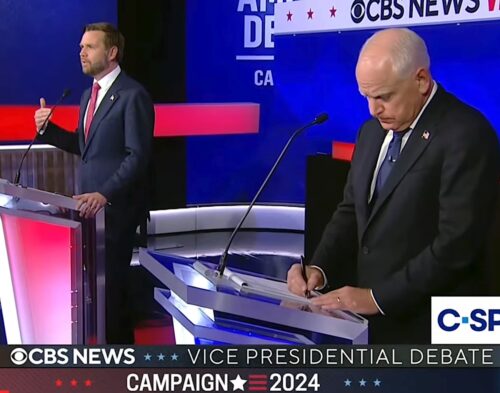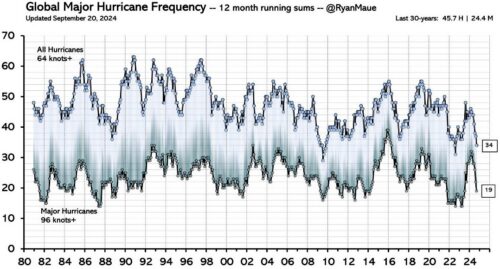

With just 34 days left until the 2024 presidential election, vice presidential candidates Minnesota Gov. Tim Walz (Democrat) and Ohio Sen. J.D. Vance (Republican) took to the debate stage Tuesday night. duel. [emphasis, links added]
CBS News hosted the vice presidential debate in New York City, moderated by “CBS Nightly News” anchor Norah O'Donnell and “Face the Nation” chief foreign affairs correspondent Margaret Brennan.
Walz, Kamala Harris' running mate, and Vance, Donald Trump's running mate, are relatively new to the political spotlight.
Walz, 60, is a high school social studies teacher who was first elected to the U.S. House of Representatives from Minnesota's 1st Congressional District in 2006.
Vance, 40, is a lawyer and venture capitalist whose memoir “Hillbilly Elegy” became a New York Times bestseller and won election to the Senate in 2022.
The candidates' microphones will be online for much of the debate, but moderators have the right to mute the microphones at their discretion.
The showdown between Vance and Walz is expected to be the final major debate of the 2024 presidential campaign.
Vance said the solar panels are made in China
Vance criticized Harris-Walz's plan to use solar panels to combat climate change.
“The problem is if you spend hundreds of millions or even billions of dollars of American taxpayer money on solar panels made in China, then number one, you're making the economy dirtier,” Vance said.
Vance says we should make more solar panels in the U.S., noting These components are manufactured overseas in China.
Erin Walsh, senior fellow for international affairs at the Heritage Foundation's Asia Research Center, said Vance is right.
The development of solar energy started in the United States, then the Chinese developed it further, and now China controls “the entire supply chain, so unless you buy something from China to make solar panels, you can't participate.” said Walsh.
China “took advantage of the United States because we have a very urgent climate agenda,” she said.
The more the United States and other countries use wind, solar, and electric vehicles, the greater China’s economic benefits will be and the greater the risks to the U.S. economy and national security. According to Walsh.
Before Vance's statement, Walz boasted that the largest solar manufacturing plant in North America is located in Minnesota.
Last month, the Biden-Harris administration announced a $40 million investment across the solar supply chain.
“Scientists say climate change is making these hurricanes bigger”
O'Donnell, one of two CBS hosts, used the devastation caused by Hurricane Helene in Florida, Georgia and North Carolina to ask the two vice presidential candidates about climate change.
“More than 160 people died and hundreds are missing,” O'Donnell said. “Scientists say climate change is making these hurricanes bigger, stronger and more deadly due to historic rainfall.”


Although climate change could theoretically affect hurricanes, The specific claim that burning fossil fuels makes hurricanes worse is not factually correct. [See Figure 1]


If the climate cools rather than warms, hurricanes should become more severe. [See Figure 2]
“[If] We have colder periods, we're going to have more hurricane activity,” climatologist David Legates told The Daily Signal Podcast in June. “If the climate warms, hurricane activity tends to decrease.”
Legez is a visiting fellow on the Scientific Advisory Board of the Heritage Foundation’s Center for Energy, Climate and the Environment and a professor emeritus at the University of Delaware. He co-authored the book Climate and Energy: The Case for Realism.
“Scientists say climate change is making these hurricanes bigger, stronger and more deadly due to historic rainfall,” Nora O'Donnell said.
No, this is a moot point, the possible temperature increases from burning fossil fuels should cause… pic.twitter.com/tfmYmYH2hX
— Tyler O’Neil (@Tyler2ONeil) October 2, 2024
Legates points to a chart showing that global hurricanes have stayed within the same overall range over the past 50 years, with no clear trends toward higher or lower intensity.
Read the Break of the Daily Signal
